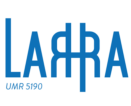Scope note for the class Text Recognition – TX5 Back
Validated
Scope note
- Text
This class comprises activities of recognizing physical features on some surface, often an instance of TX4 Writing Field, as an arrangement of a series of identifiable glyphs of some known script, deciphered or not, in an order characteristic for a text.
For study purposes, the text recognition procedure requires a scientific autoptic examination of the text. An autoptic examination consists of an accurate analysis of the surface and the signs, and prescribes the use of specific tools and procedures for establishing the exact value of each sign on the physical feature. Deterioration of the original medium or “sloppy” writing may render parts of the original text as undecipherable or ambiguous, which may be annotated in the transcript following epigraphic standards; a text recognition typically results in a record of an equivalent sequence of graphemes on another persistent medium in a scholarly established form of representation of the respective graphemes, often called a “transcript”.
An instance of TX5 Text Recognition may in particular apply even to a single glyph, typically forming part of an instance of TX5 Text Recognition applying to a larger sequence of glyphs containing the former glyph.
The recognition process may be assisted by mechanical means, imaging technology, or a traditional squeeze for incised glyphs. In case the recognition process is solely based on the latter, the observation concerns only the representations on the latter as present to the researcher in some physical form or projection and should unambiguously be documented as such.
In case the recognized text has not been documented in a transcript, text recognition may constitute an implicit part of an overarching reading process, instance of TX14 Reading, which has resulted in other noteworthy propositions related to the content of the recognized text. On the other side, recognition of single glyphs or contracted parts of texts, as they are characteristic for the use of ligatured scripts, may quite well be implicitly supported by the reader’s comprehension of the text and the creator of the transcript may have chosen not to annotate parts that the reader regarded as unambiguous. Since these cases can often hardly be separated from the shape recognition of the glyphs in isolation, documenting such implicit comprehension as a separate process may not be relevant. It is however regarded as good practice to document explicitly the reading process and associated interpretative reasoning for any non-trivial resolution of ambiguity or gaps in the recognized text that has a bearing on the transcript or further completion of the transcript.
- Language
- en




Comments
No comment found.